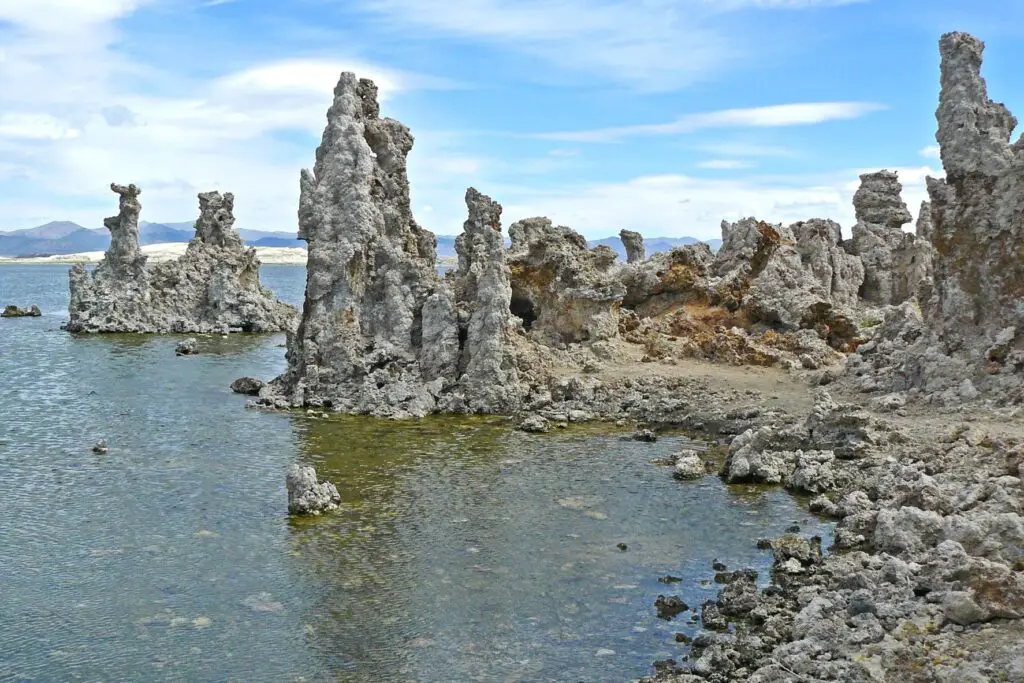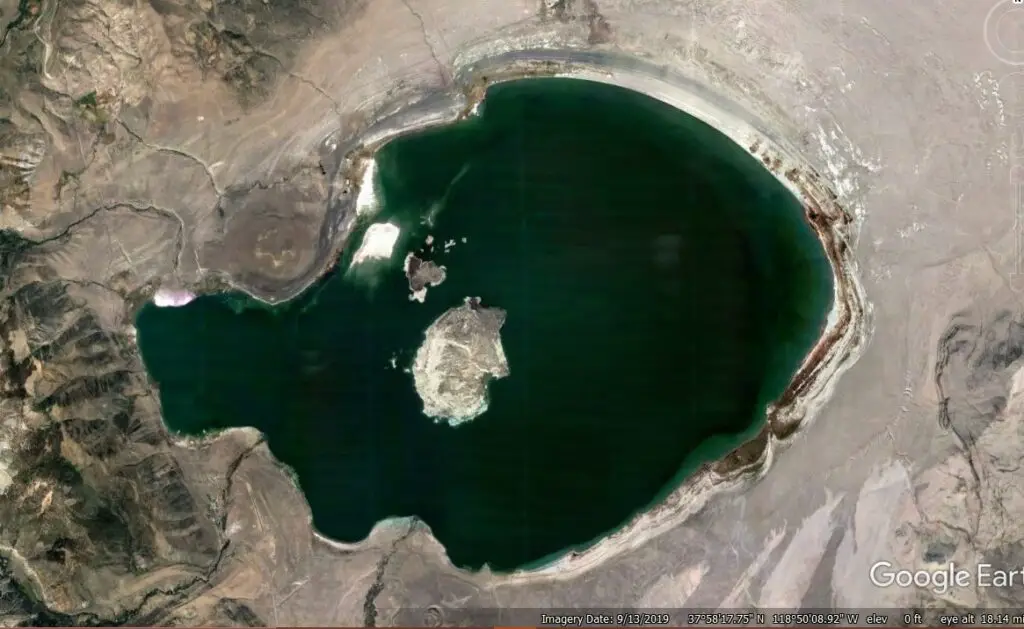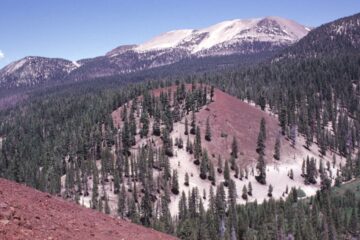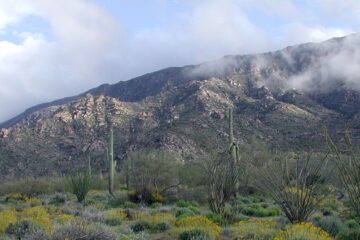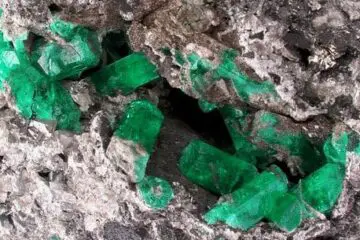Another lost gold mine story from the vast Desert Magazine archive. Written by Frank Eads, an occasional contributor, in the May 1952 issue, this isn’t your normal lost mine story. This one is about the lost gold of Mono Lake and concerns an attempt to recover colloidal gold from it’s highly saline and alkaline waters.
Today Mono Lake is a pristine environment and wetland refuge area, popular with sightseers, kayakers and birdwatchers. On the eastern side of the Sierra Nevada mountains about 300 miles north of Los Angeles.
Covering 70 square miles, Mono Lake is also popular with photographers because of it’s strangely shaped tufa pillars. It’s a stark and beautiful landscape that’s worth seeing. But back in 1923, people had another reason for visiting.
Lost Gold of Mono Lake
It was in the year 1923 that news trickled into Los Angeles through grapevine channels that the greatest of all California gold discoveries had been made in Mono County. The gold was in Mono Lake. With a friend, I left immediately for the scene of the new gold strike. When we reached Mono Lake I found that every foot of the 60-mile shoreline had been staked out as mining claims.
Seven more or less crude gold recovery plants had been installed along the western shore of the lake and an eighth plant was on the north shore. Most of the plants were owned by stock companies formed at Portland, Oregon. None of the companies had qualified to sell stock in California.
One of the men who had made an experimental installation was Professor Herschel Parker, member of the American Geographic Society and a Fellow of the Royal Society of London. He had been a professor of physics at Columbia University for 20 years. Prof. Parker had made a commercial assay of the water in the lake for its gold content.
The assay produced a small button of gold which he carried in a glass vial. When he showed me this he remarked that it was the only measurable quantity of the precious metal that had ever been extracted from the lake.
He estimated that the water carried in solution $1.00 a ton in gold and 15 pounds of chemical ash. Using such approximate measurements as were available, he and I sat down and estimated that Mono Lake contained 15 billion tons of water.
If this figure is correct, then there was $15,000,000,000 in gold—more than all the gold mined in the United States since the first gold discovery was made.
And in addition there were 225 billion pounds of chemical ash—also worth a fortune. Prof. Parker spent several months experimenting with his recovery plant, revamping it many times.
In the end he made the statement that the gold in Mono could not be salvaged by any known chemical or electrical process.
More Lost Mines – The Lost Emerald Mine of the Santa Rosa Mountains
